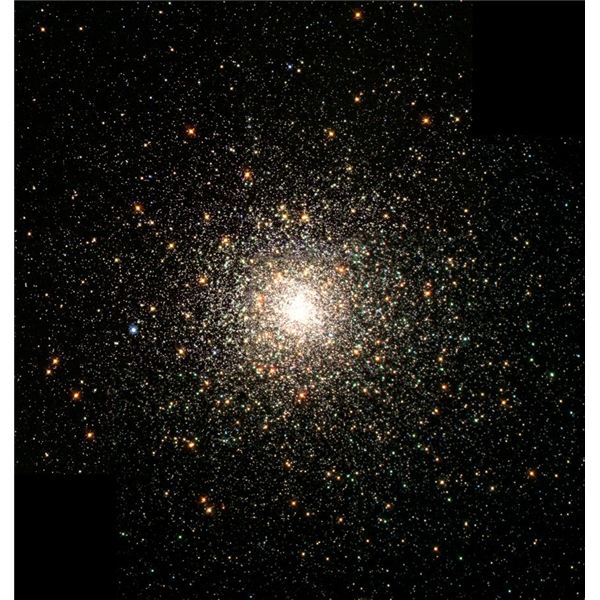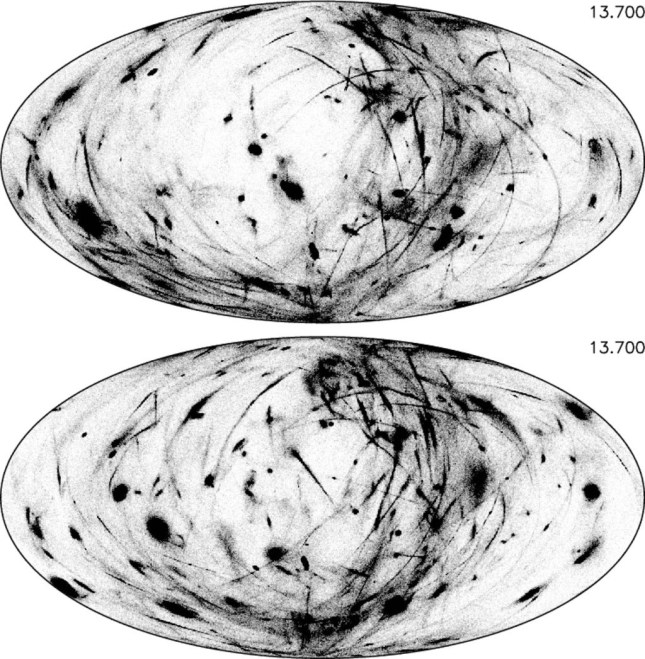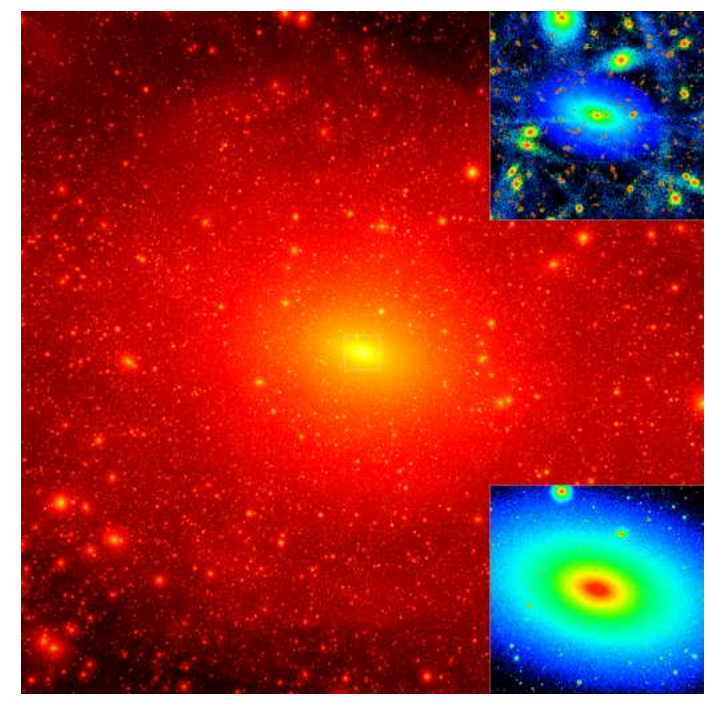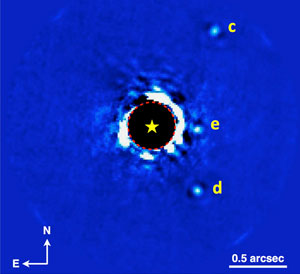Globular Clusters
Globular clusters are spherical collections of between 106 and 107 stars that are found in all types of galaxies. The Milky Way contains over 150 globular clusters, while some giant elliptical galaxies have been found to contain over 10,000.
My research focuses on studying the dynamical evolution of globular clusters from birth to present day. More specifically, I am interested in the relationship between a globular cluster and the gravitational field of its host galaxy. What role does the host galaxy play in a cluster's evolution? Is the cluster's location and orbit within a galaxy a contributing factor? (Image Credit: apod.nasa.gov)


Stellar Streams
As stars escape from a globular cluster, due to internal and external mechanisms, tidal tails begin to form. Once a cluster has fully dissolved, a long thin stellar stream of escaped of stars will continue along on the cluster's intitial orbit.
Due to their length and the minimal amount of interaction between stars along a stream, streams are ideal for studying the gravitational field of their host galaxy. I am interested in how the properties of stellar streams depend on the initial host cluster and its orbit within the Milky Way. Understanding the details of how stellar streams form and evolve will allow for them to be used to trace out the distribution of dark matter in our own galaxy's halo and even search for evidence of dark matter substructure. (Image Credit: Carlberg 2018)
Dark Matter Sub-Halos
The Cold Dark Matter framework predicts that galaxies consist of a large number of dark matter sub-halos. While the most massive sub-halos can be observed as satellite galaxies, lower mass sub-halos will likely have no luminous component to observe.Therefore astronomers are constantly searching for ways of indirectly determining that sub-halos exists in order to validate different cosmological theories and the nature of dark matter itself.
I am interested in how sub-halos themselves evolve and interact with things like stellar streams and globular clusters. More specifically, do these interactions leave fingerprints of the properties of dark matter sub-halos? (Image Credit: Diemand et al. 2008)


Exoplanets
Exoplanets have been observed to have a wide range of orbital properties compared to planets in our solary sytems. While the planets in our solary system all have nearly circular orbits with similar orbital planes, sevaral exoplanets have been found to have highly eccentric orbits and/or highly inclined orbits. Furthermore, some exoplanetary systems have exoplanets orbiting much closer too or much farther away from their host star than any of the planet's in our solar system.
I am interested in how gravitational interactions between planets and gravitational interactions between planets and nearby stars can alter the orbital dynamics of planetary sytems (Image Credit: Marois et al. 2010).
